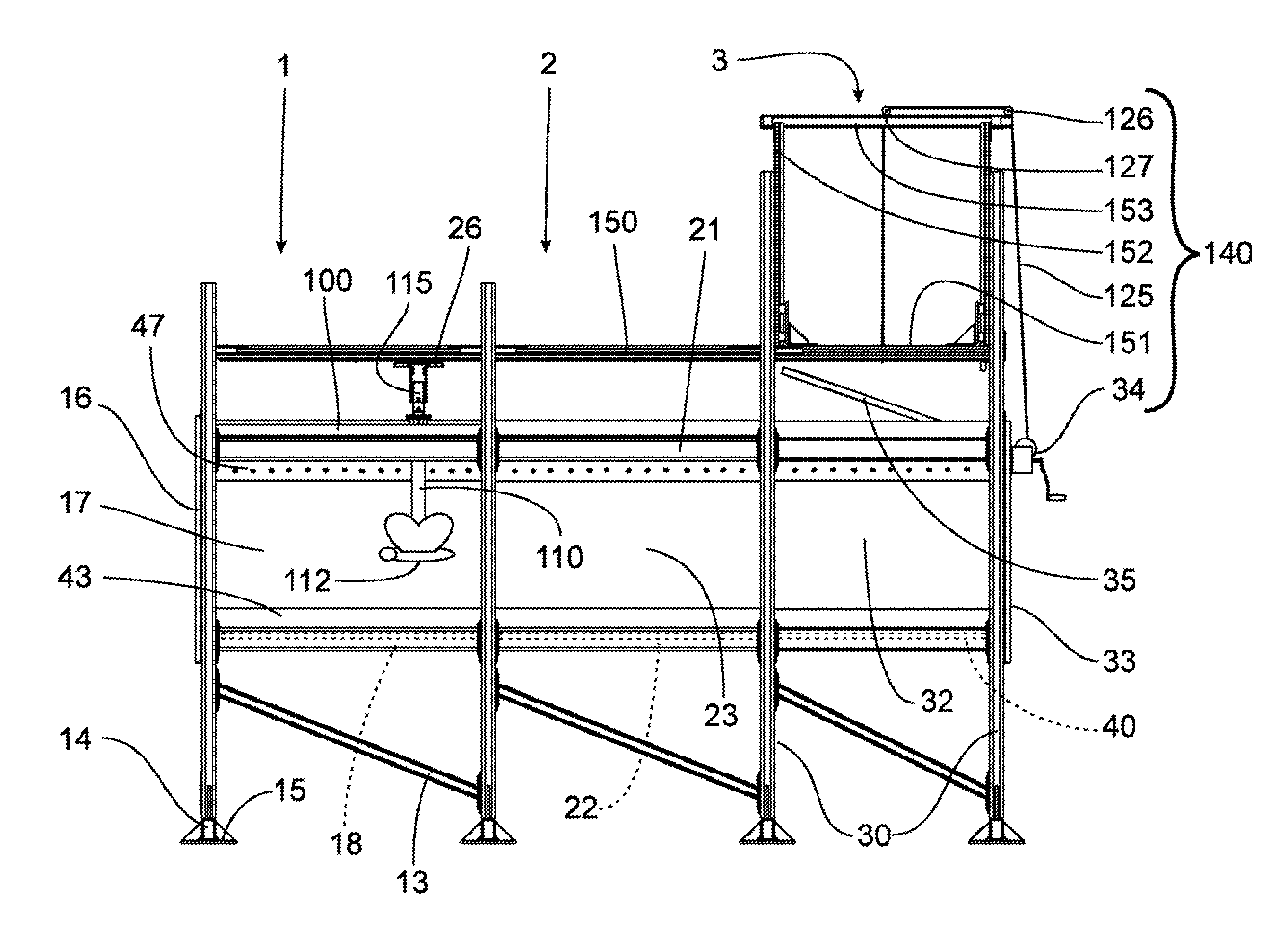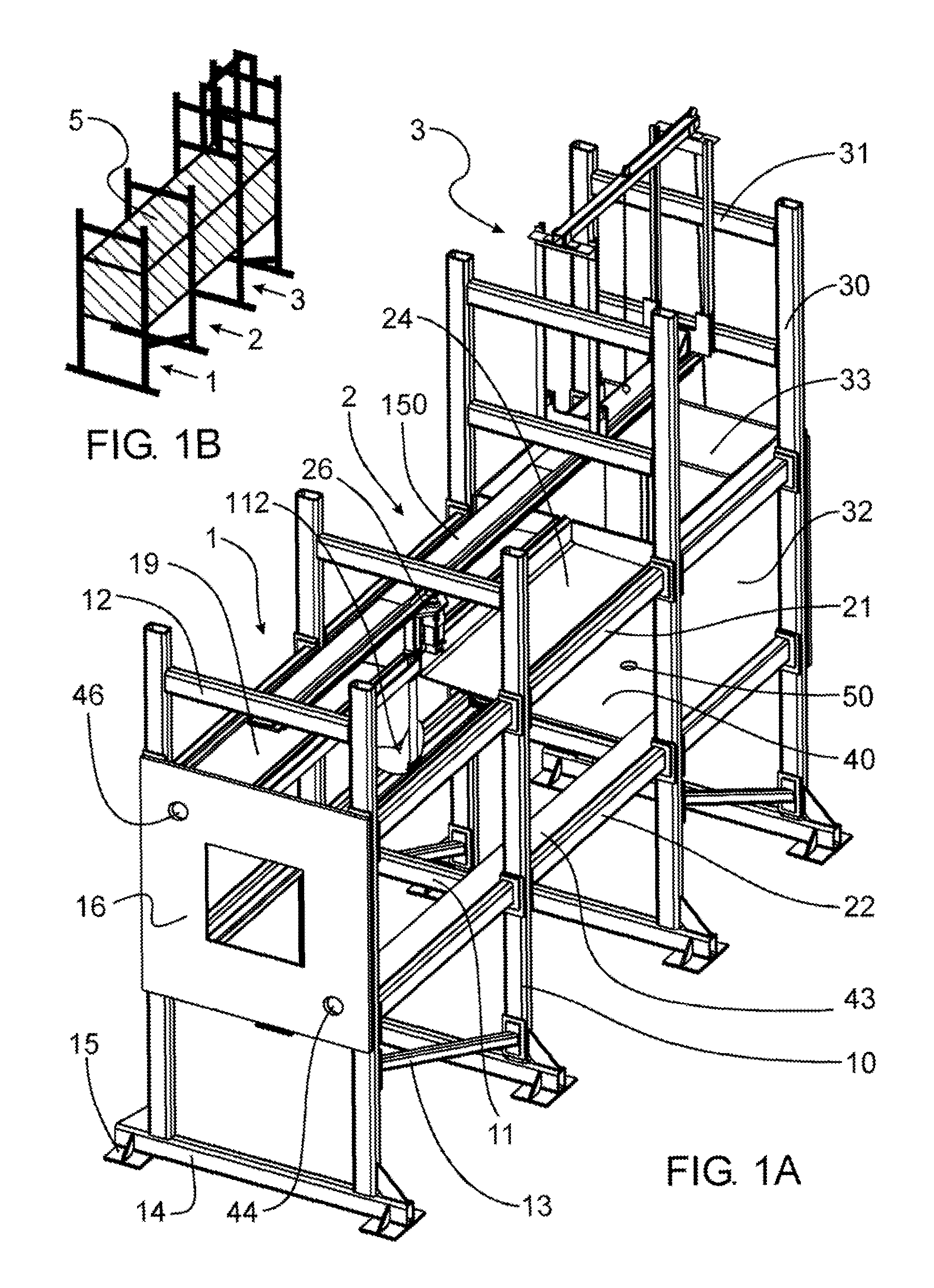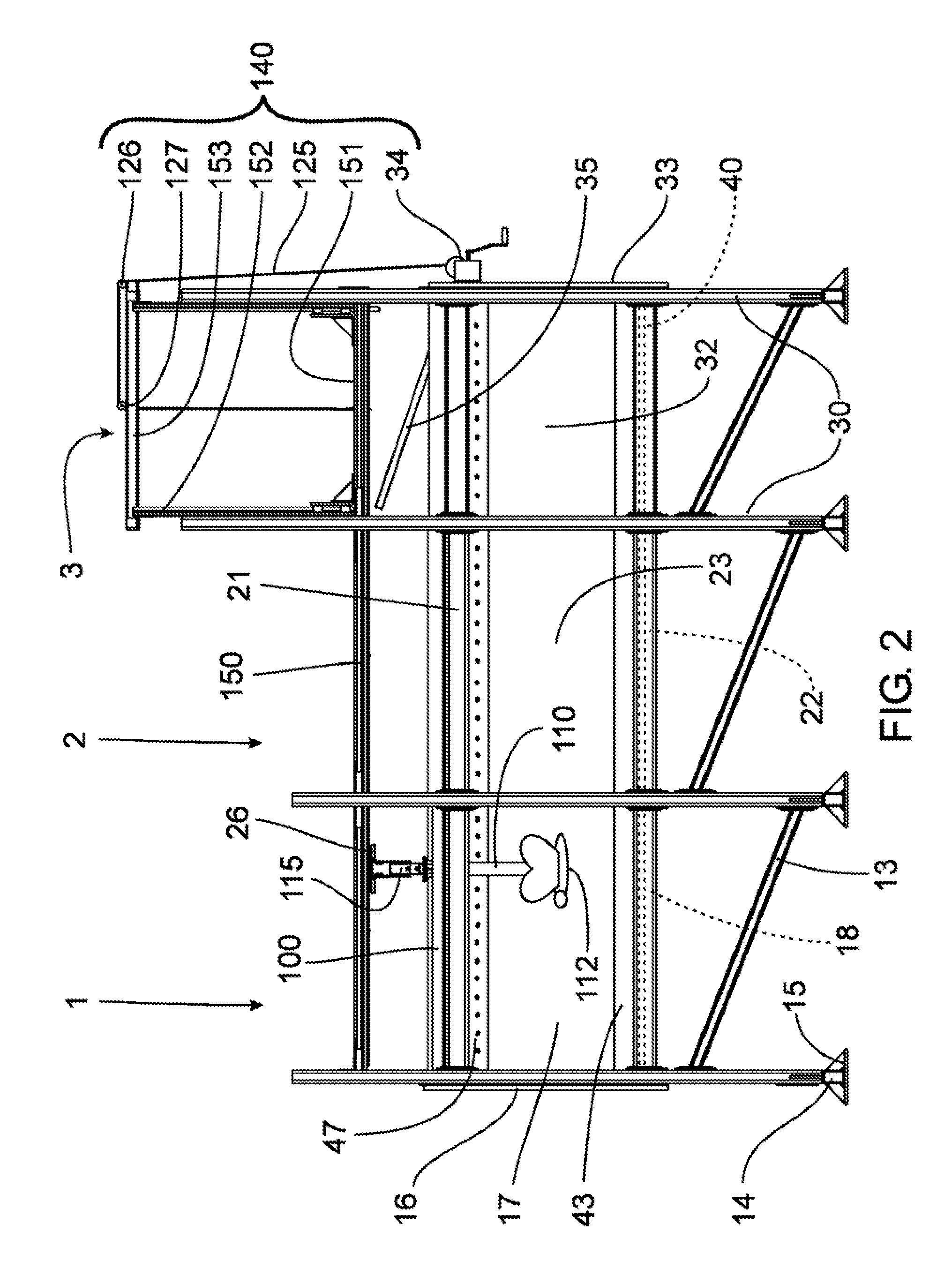Method and apparatus for aerodynamic/hydrodynamic testing of a model
a technology of aerodynamic/hydrodynamic testing and model, applied in the direction of instruments, structural/machine measurement, vessel construction, etc., can solve the problems of affecting other measurements, affecting the flow, and unsatisfactory waves, etc., to improve aerodynamic and hydrodynamic testing
- Summary
- Abstract
- Description
- Claims
- Application Information
AI Technical Summary
Benefits of technology
Problems solved by technology
Method used
Image
Examples
Embodiment Construction
[0032]Generally, the present invention provides an apparatus, designed to conduct aerodynamic and hydrodynamic tests at very low Reynolds numbers, that addresses the problems encountered in conventional facilities when used under these conditions. The apparatus provides an enclosure for a test medium, which substantially eliminates any free surface between the medium and its surroundings, while permitting a model to move through the medium. The fluid contained in the tank is fully surrounded by and in contact with the walls, floor and roof, thereby substantially eliminating the possibility of a free surface. A method of using such an apparatus is also provided.
[0033]Preferably, the test medium is a mixture of two or more liquids where some have high viscosity and others have low viscosity, such that the viscosity of the test medium can be adjusted by changing the ratio between the components.
[0034]A first embodiment of the present invention is shown in FIGS. 1A, 1B, 2, 3A and 3B. Re...
PUM
| Property | Measurement | Unit |
|---|---|---|
| viscosity | aaaaa | aaaaa |
| kinematic viscosity | aaaaa | aaaaa |
| kinematic viscosity | aaaaa | aaaaa |
Abstract
Description
Claims
Application Information
 Login to View More
Login to View More - R&D
- Intellectual Property
- Life Sciences
- Materials
- Tech Scout
- Unparalleled Data Quality
- Higher Quality Content
- 60% Fewer Hallucinations
Browse by: Latest US Patents, China's latest patents, Technical Efficacy Thesaurus, Application Domain, Technology Topic, Popular Technical Reports.
© 2025 PatSnap. All rights reserved.Legal|Privacy policy|Modern Slavery Act Transparency Statement|Sitemap|About US| Contact US: help@patsnap.com



